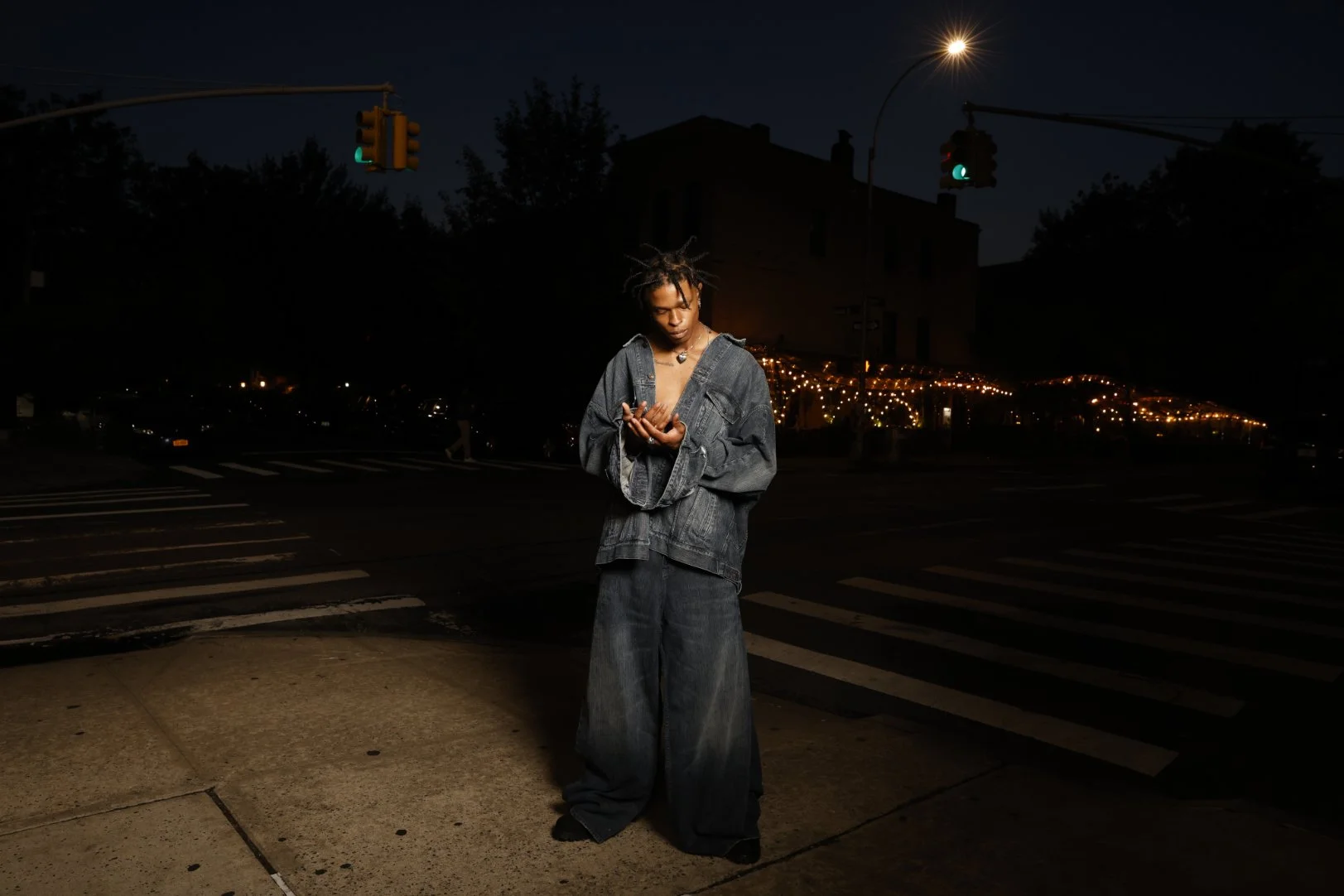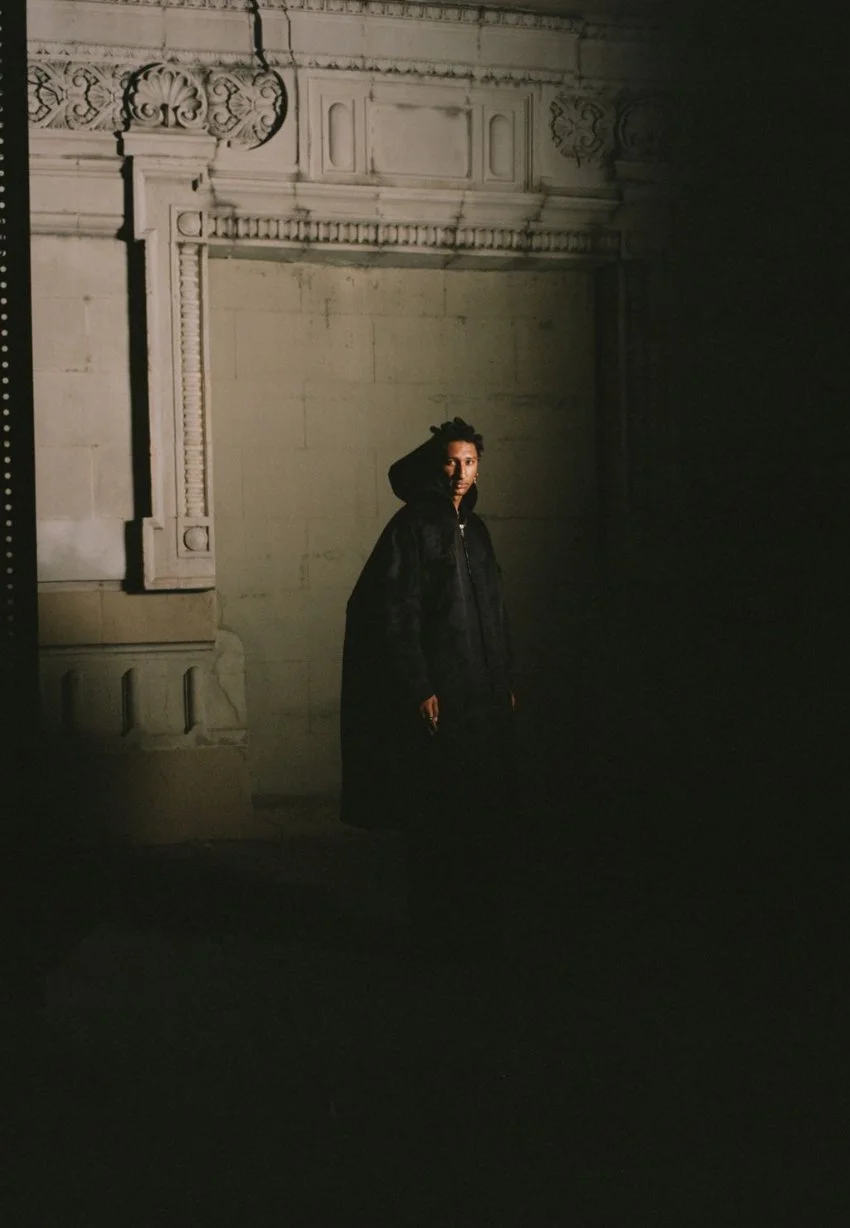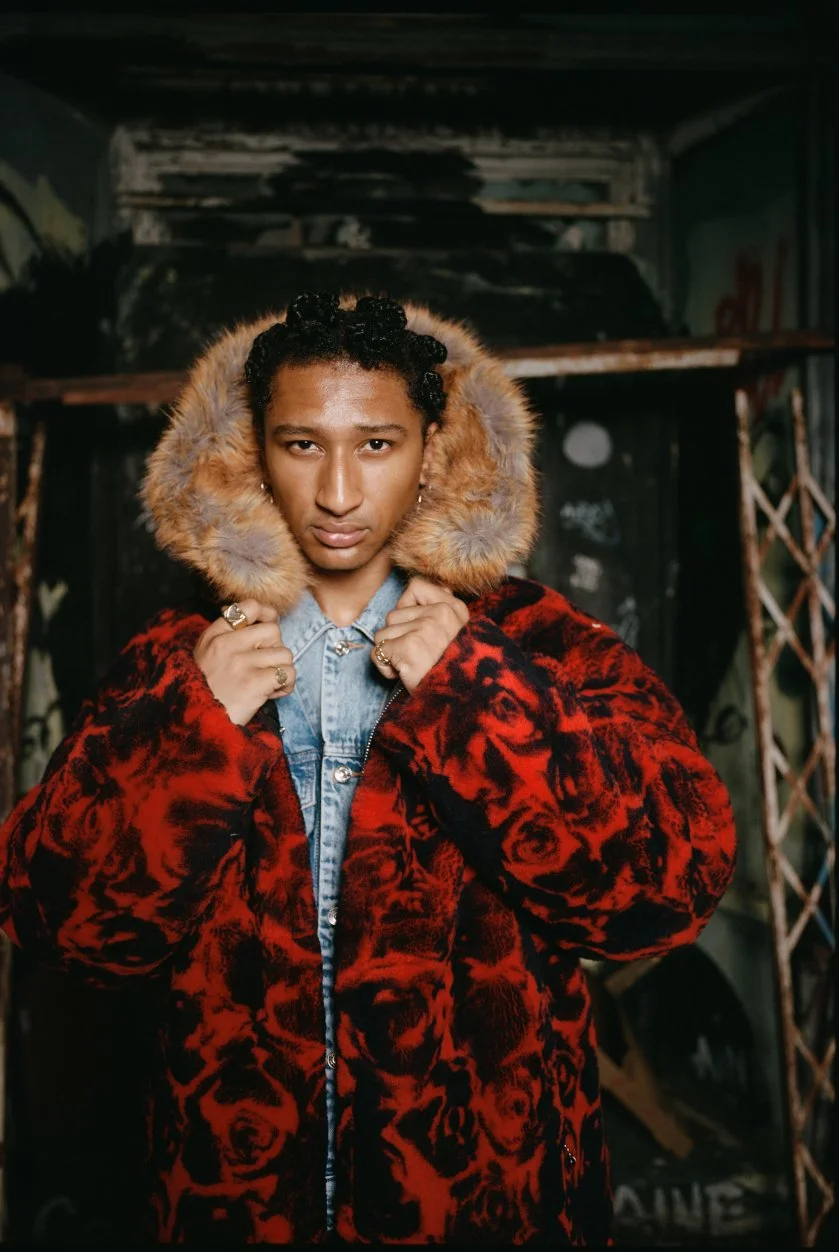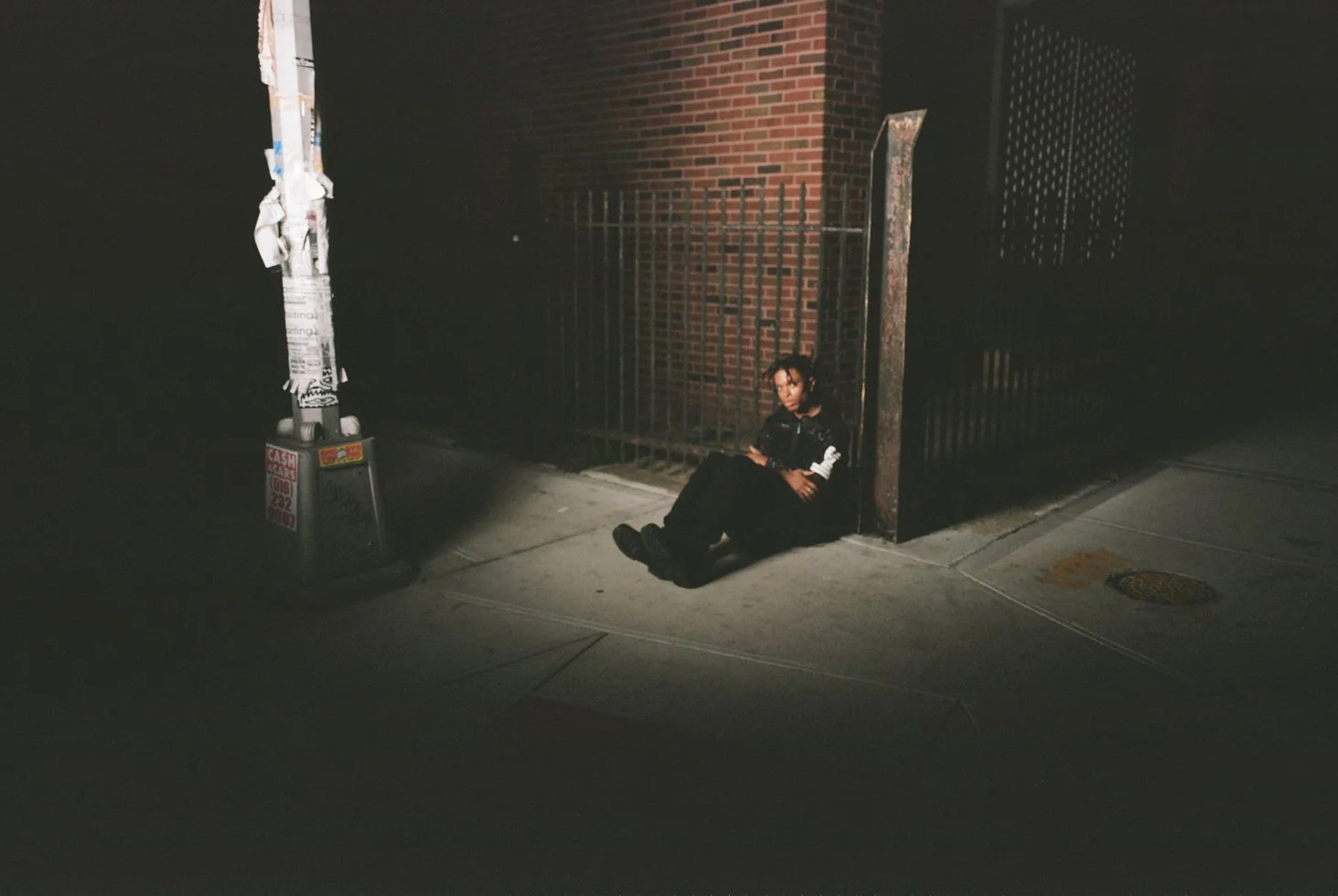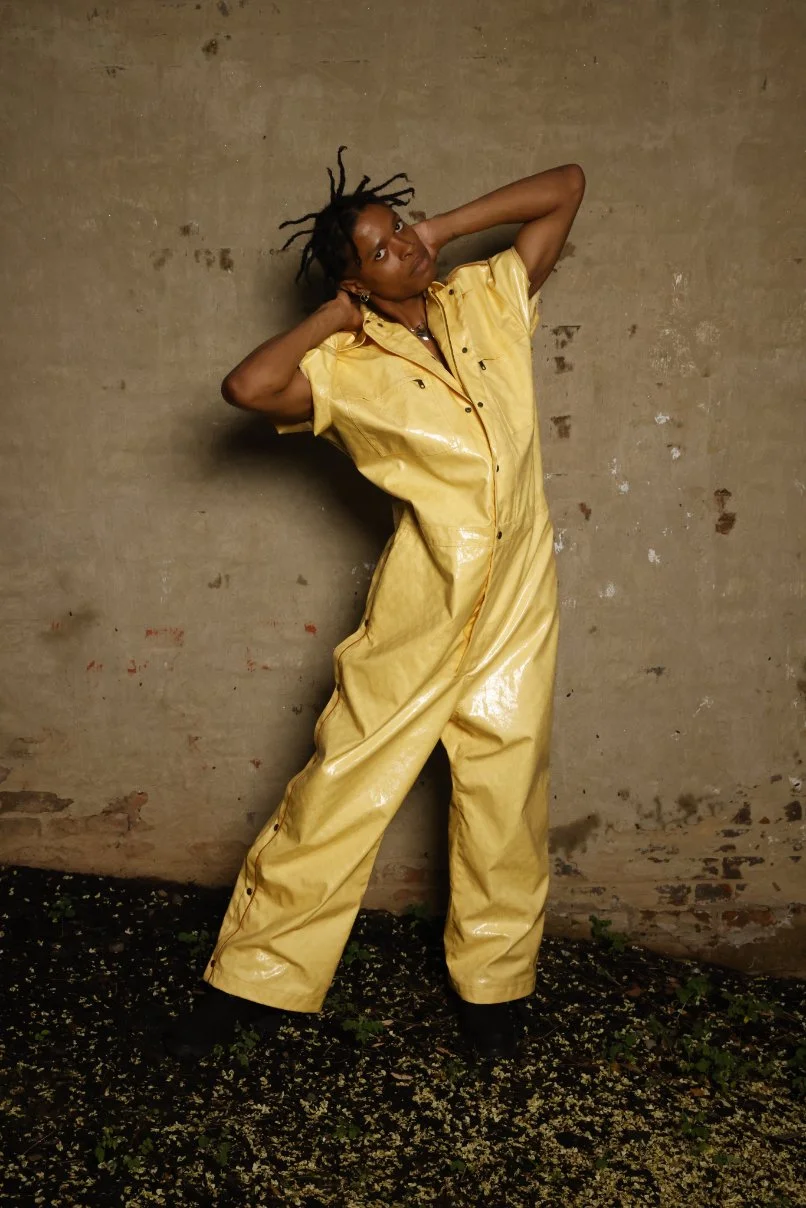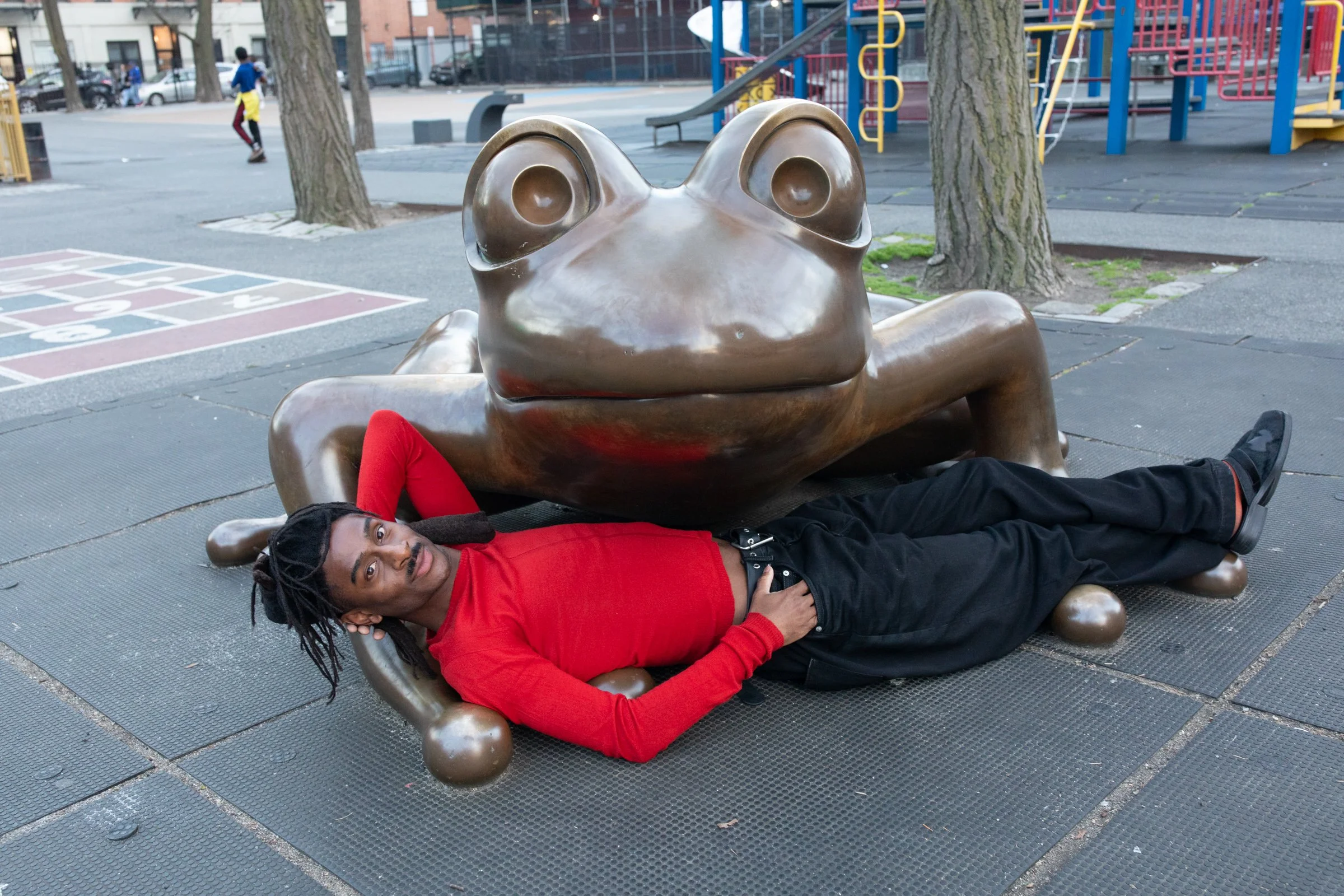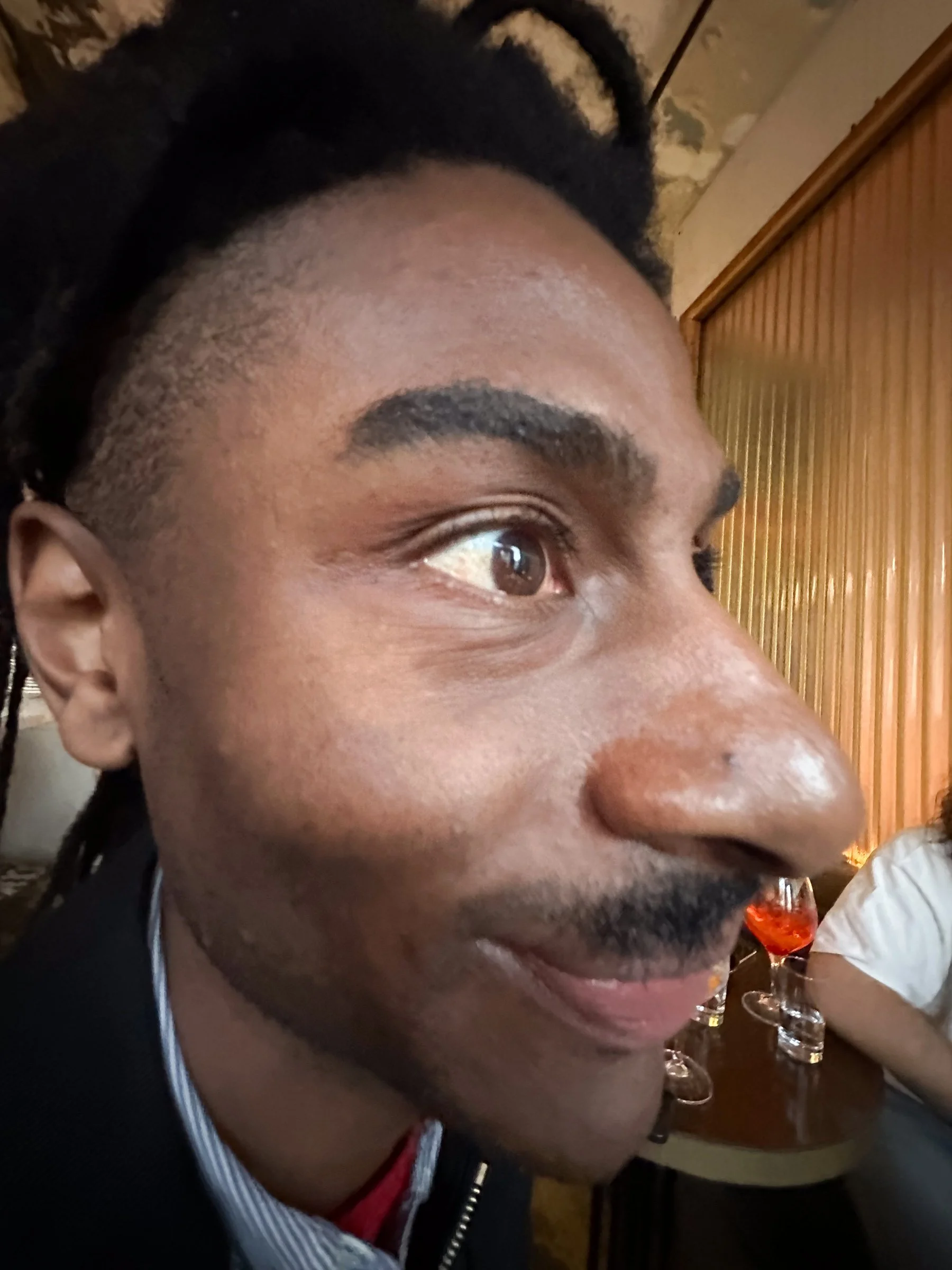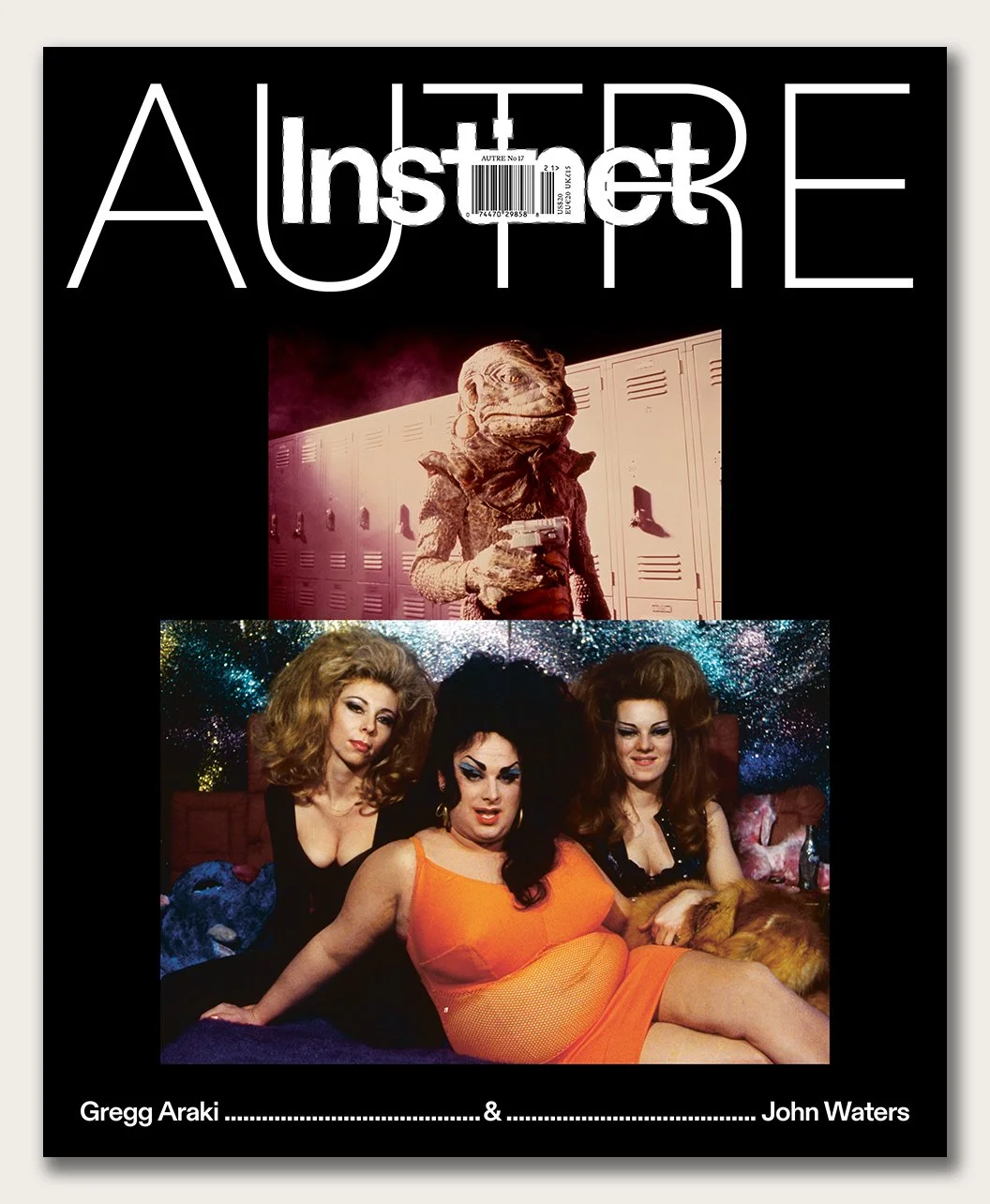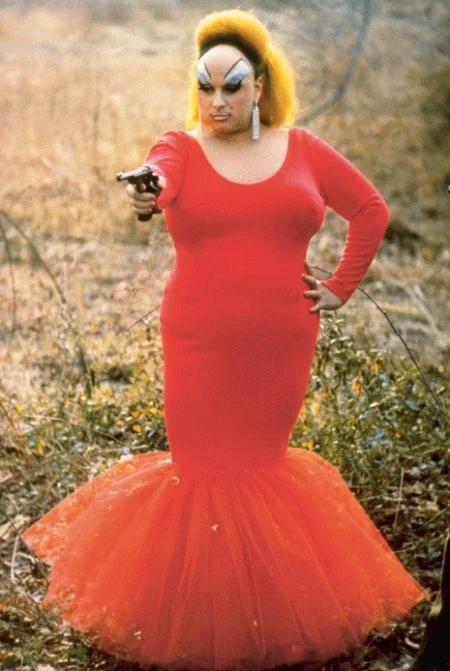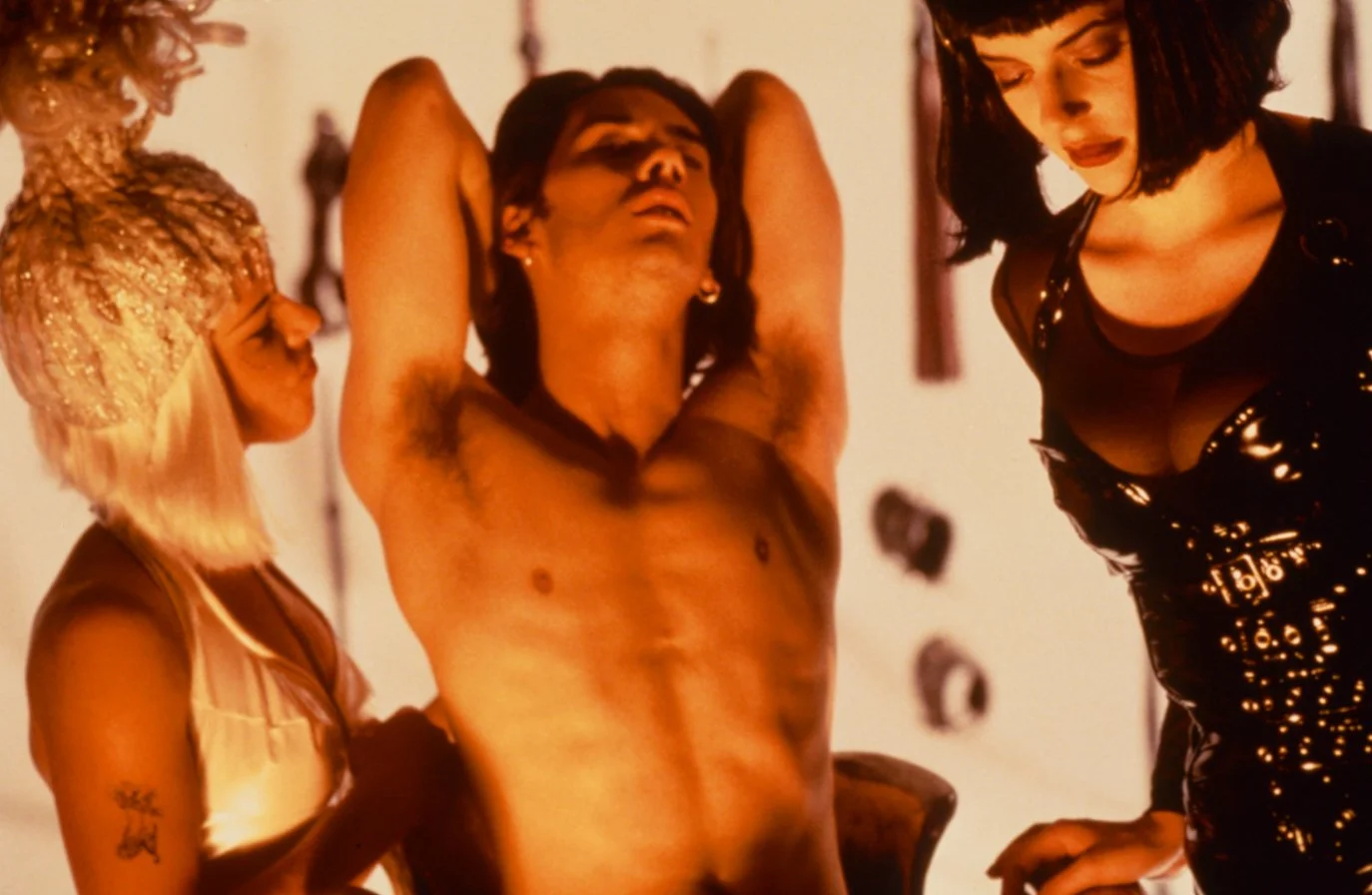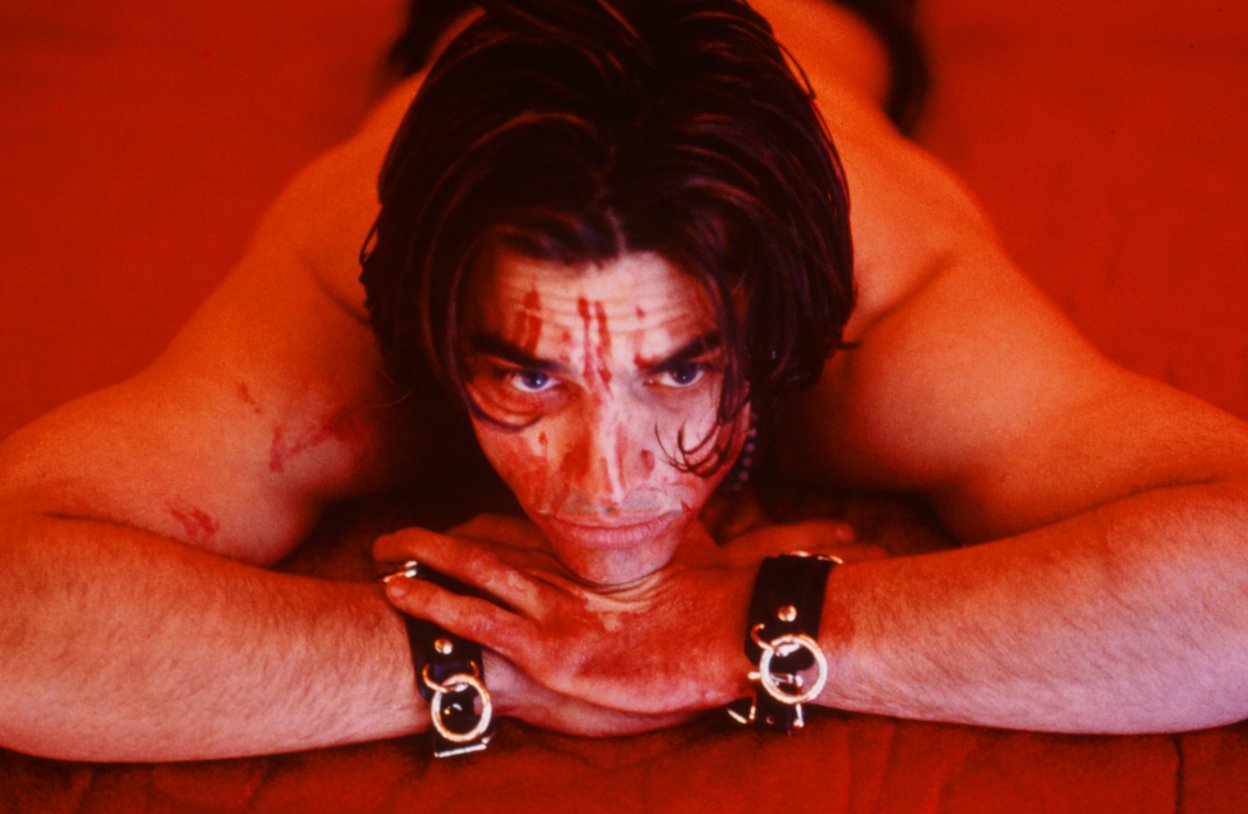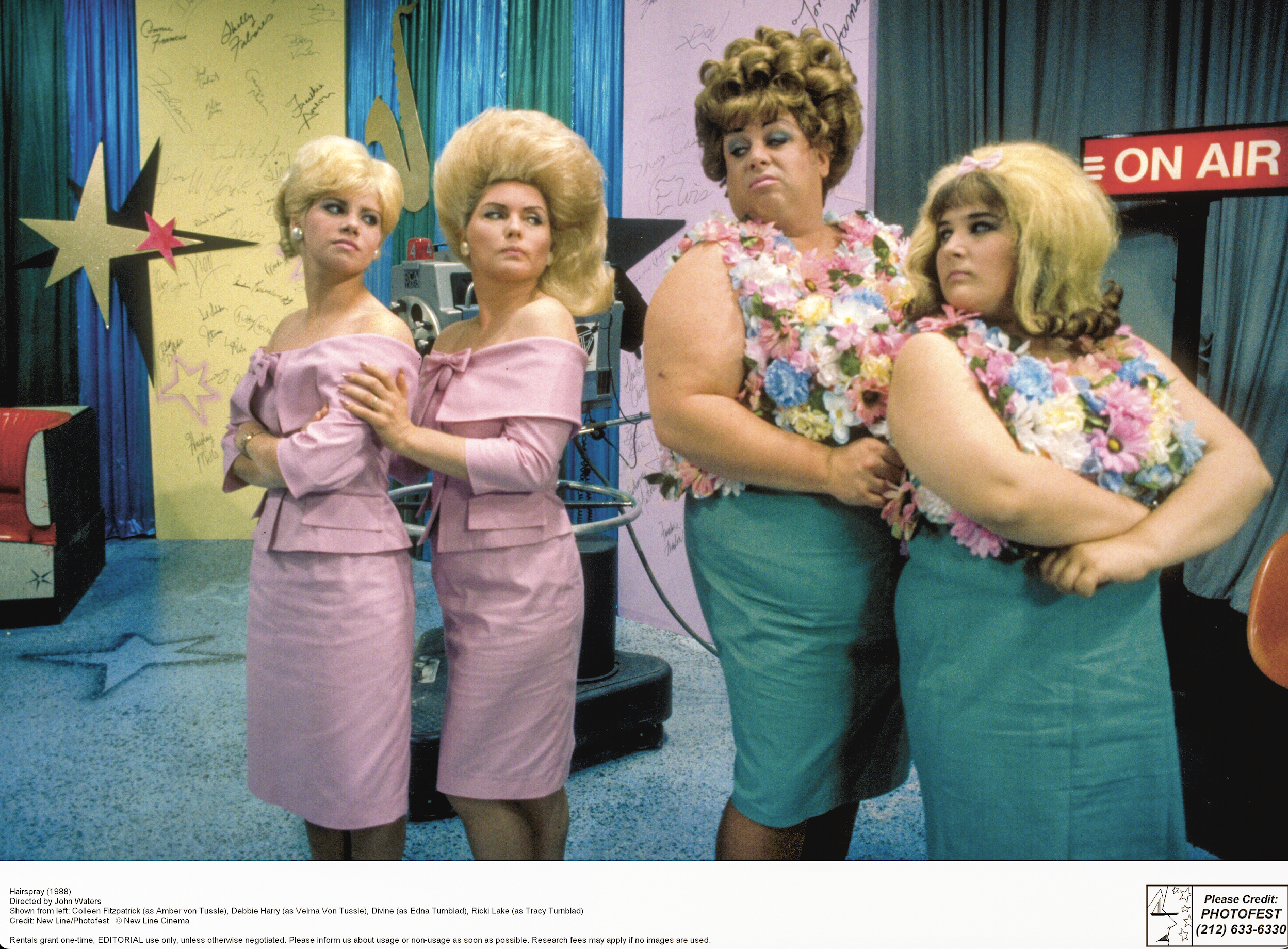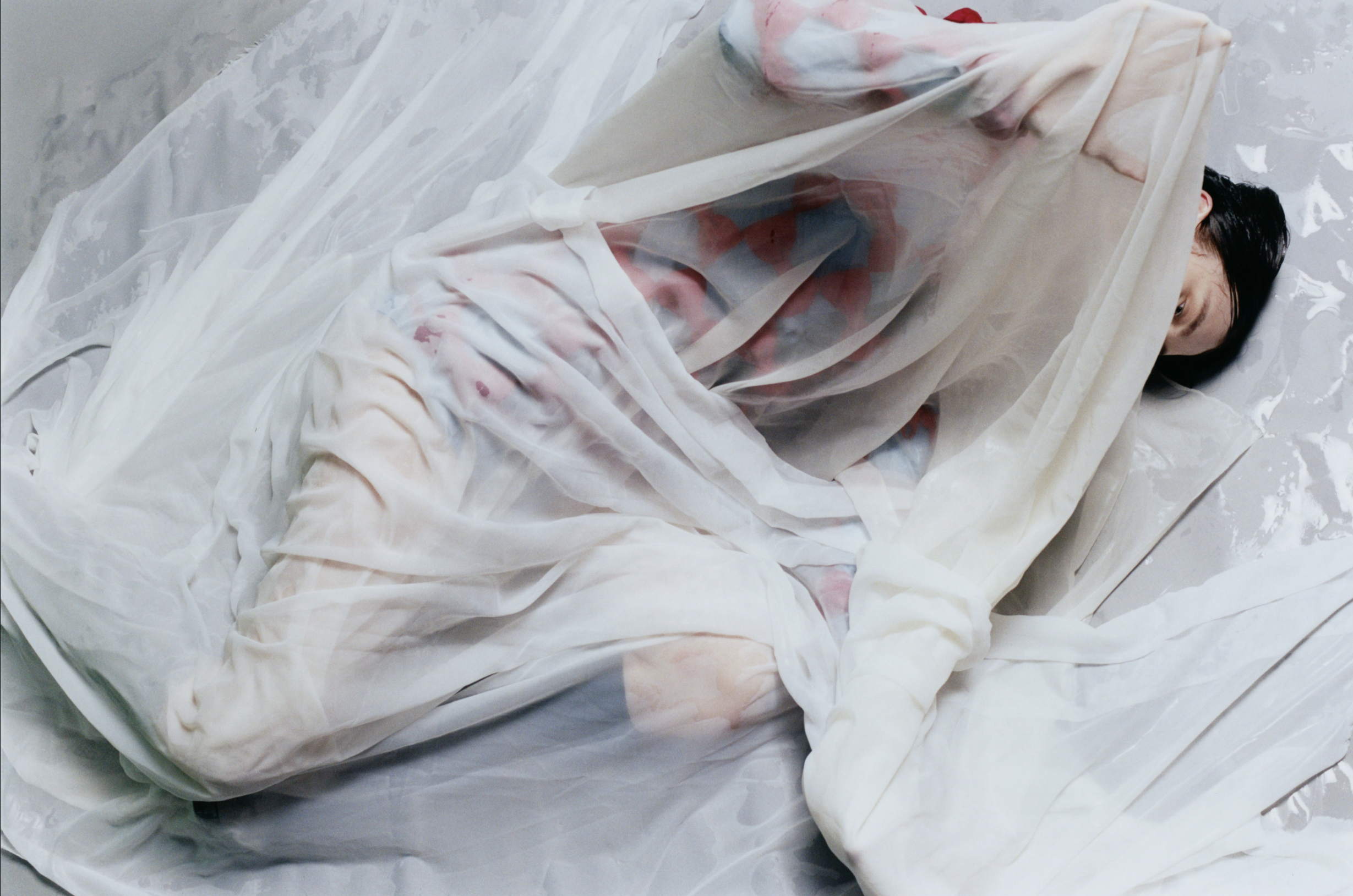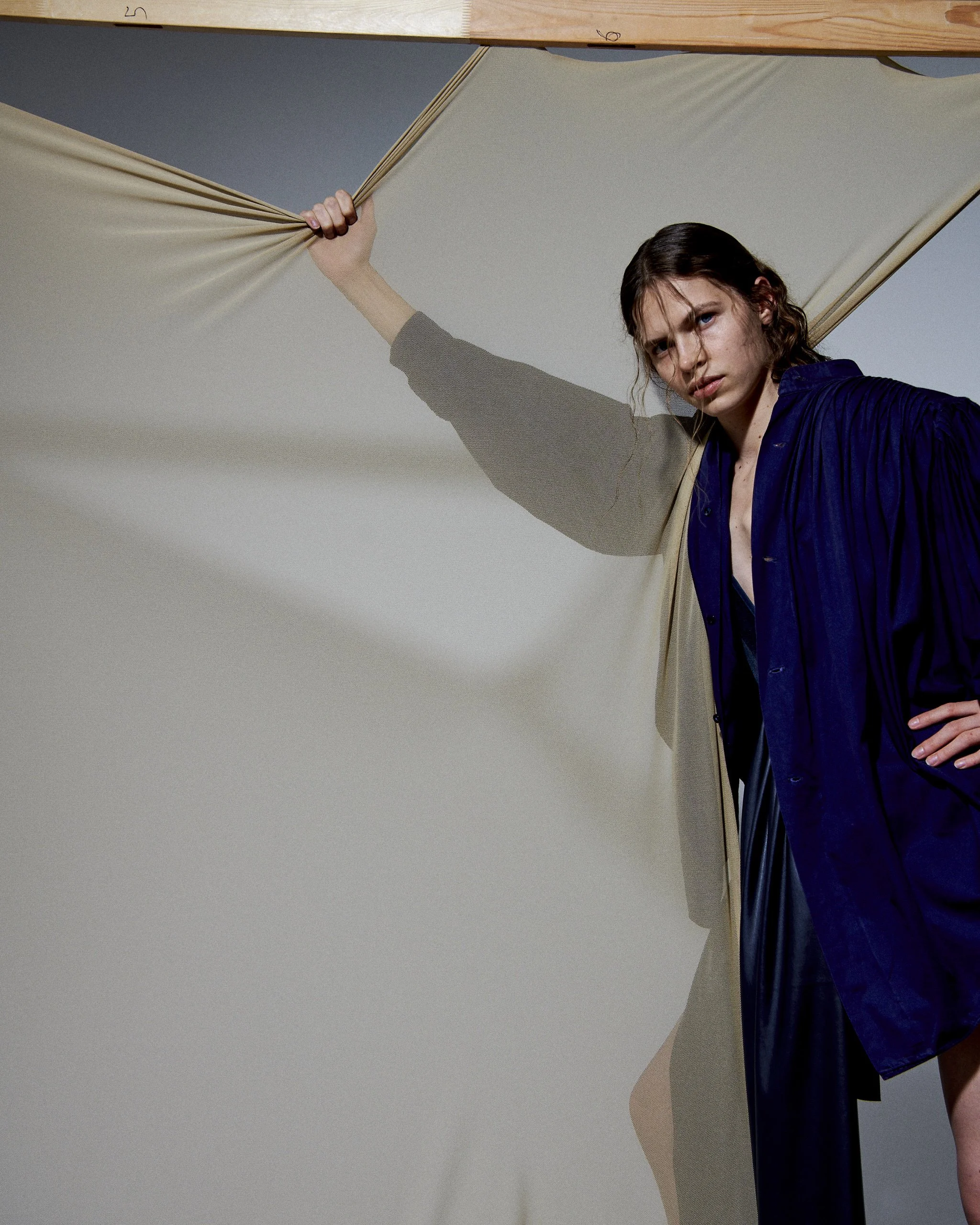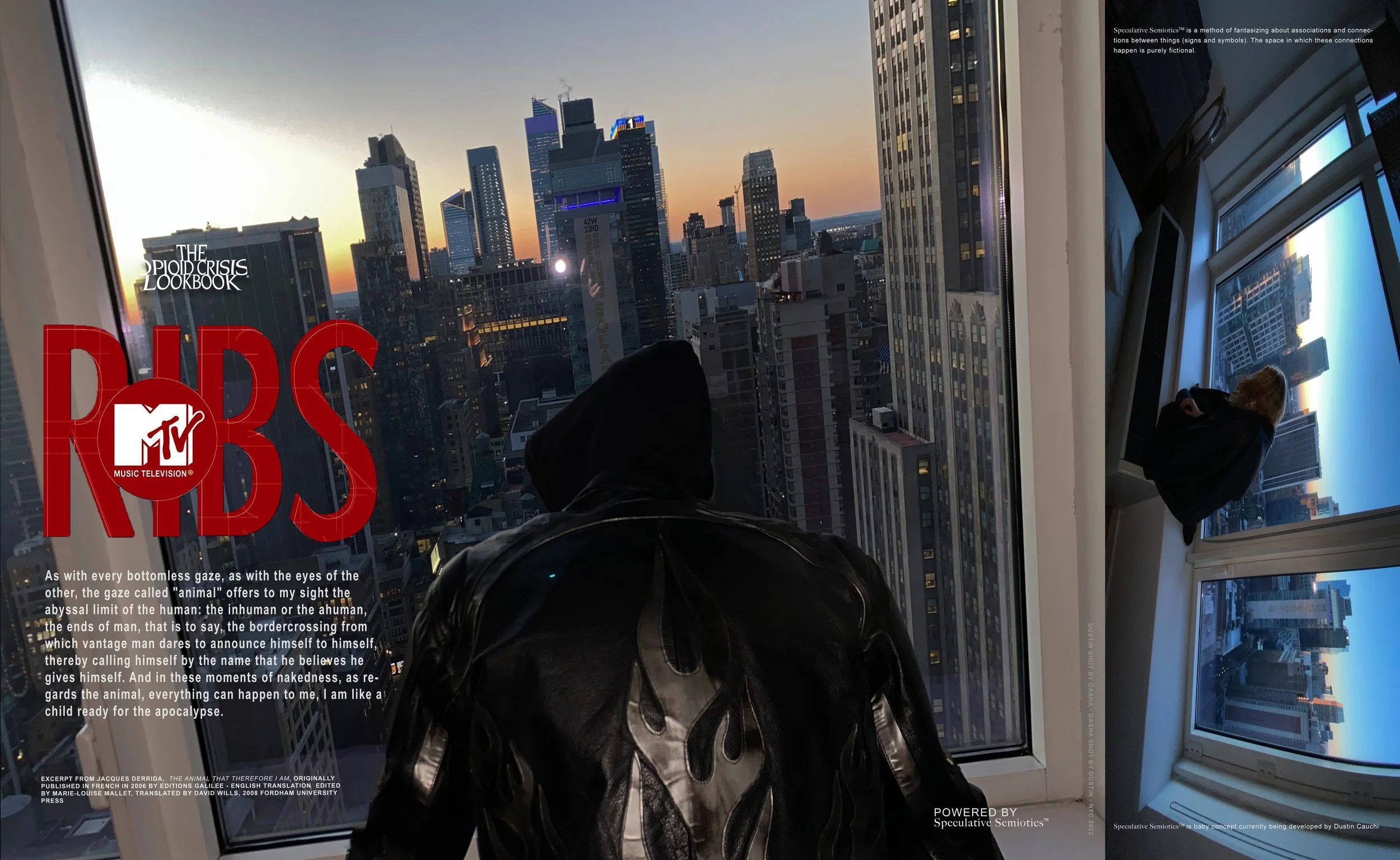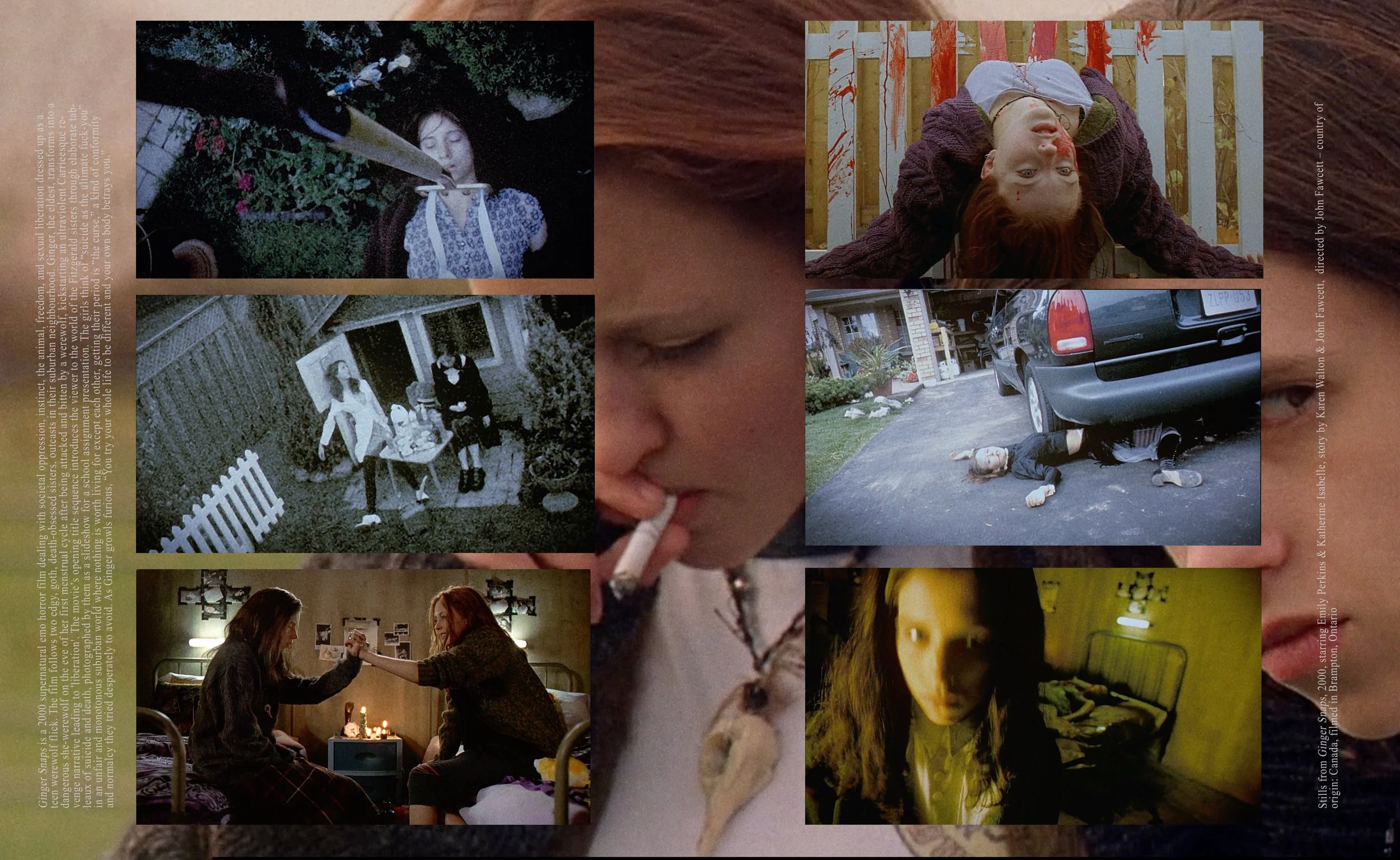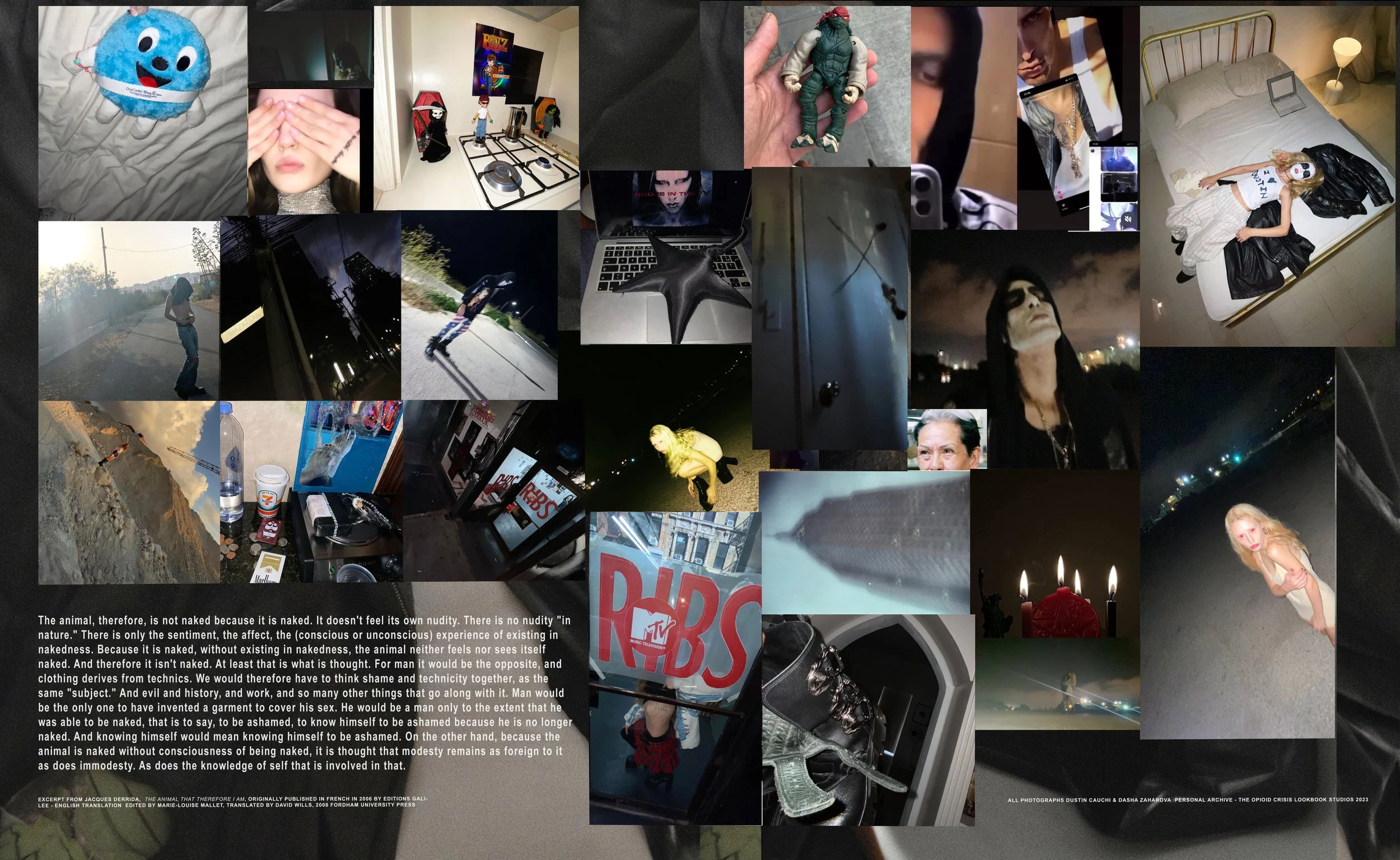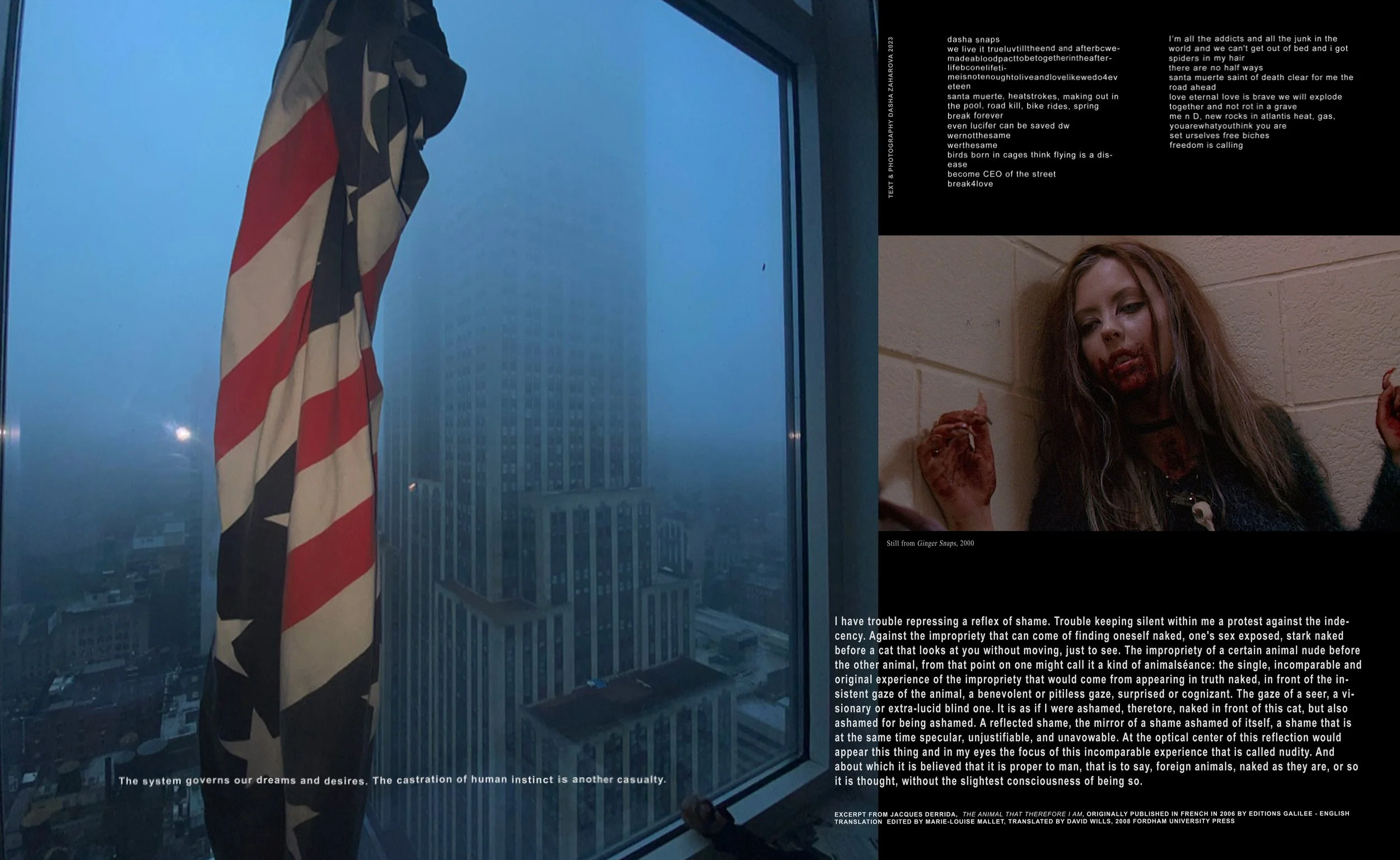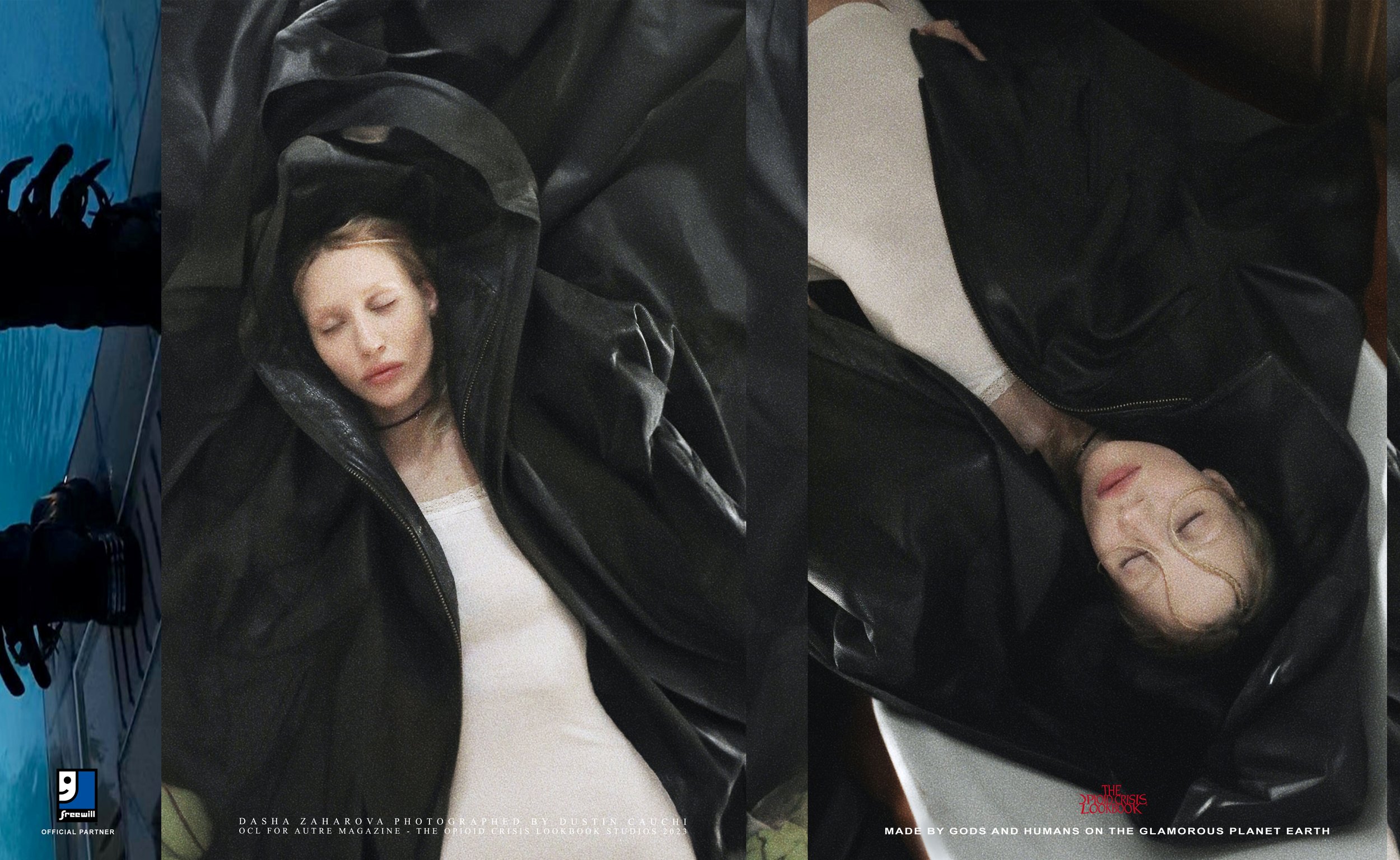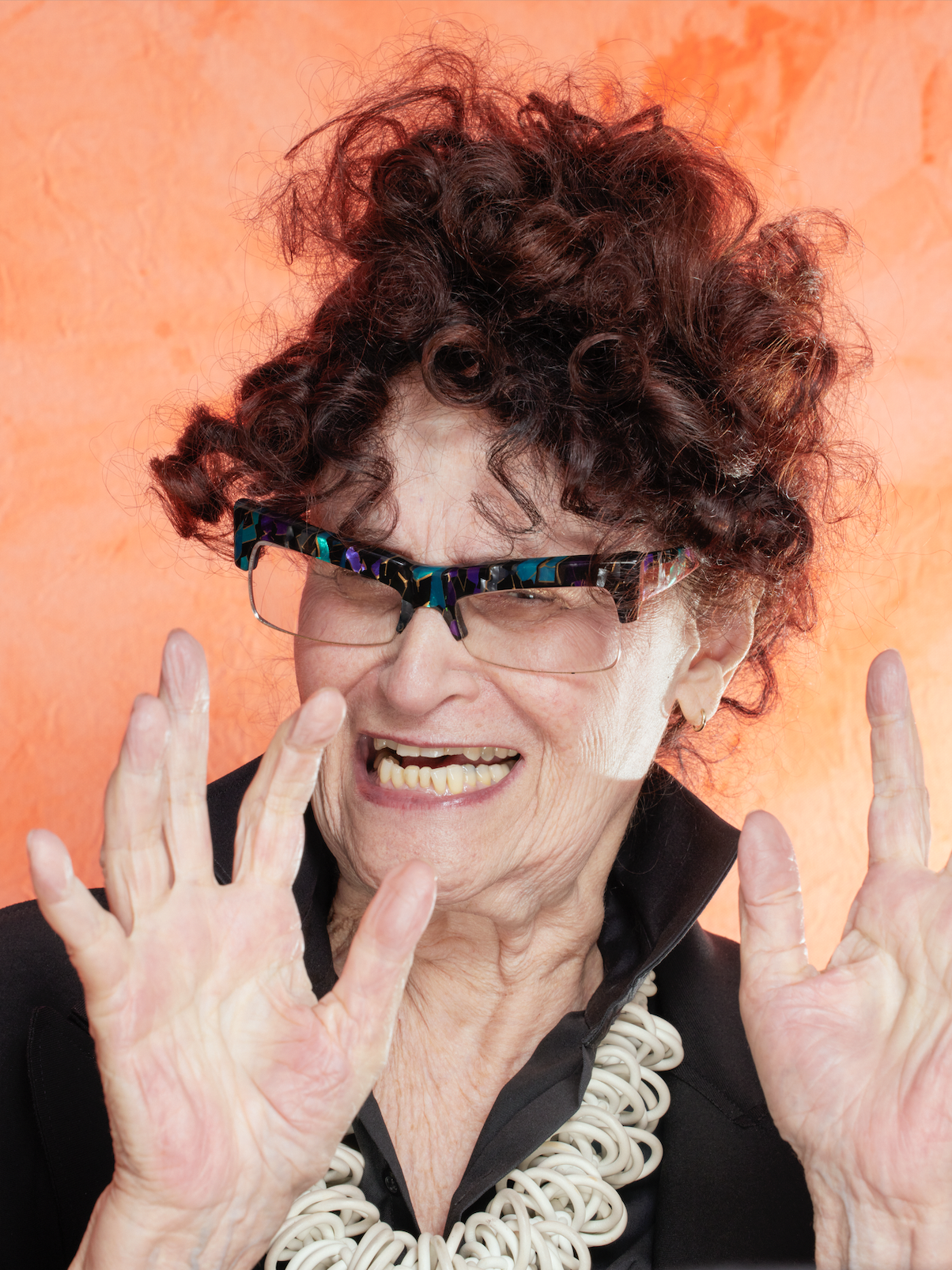JONNY NEGRON
Desire Develops An Edge (2021)
Acrylic on linen
40 x 64 in
interview by Oliver Misraje
The paintings of Los Angeles-based Jonny Negron are rife with ancient and contemporary symbology. Scenes of decadent, sensuous nightlife, commodity fetishization, and urban atmospheres with crepuscular orange and twilit purple hues—all with an impending sense of calamity—are wrapped in the structures of biblical and art historical motifs like a mummy’s gauze. Recently, Negron showed a new suite of paintings at Pond Society in Shanghai, his first exhibition at an international institution.
OLIVER MISRAJE There seems to be an Apollonian and Dionysian dichotomy in your work. Nietzsche talks about culture being fueled by primordial impulses. One is Apollonian, which you see in your color palette, the bright colors, the golds, which could be connected to order, poetry, and language. And then, there's the Dionysian impulse, which is where you see the purple and dark color palettes—this exuberant, animalistic impulse towards art and creation. It’s interesting how you center those things—to use Judeo-Christian terminology, it’s like the centering of heaven and hell.
JONNY NEGRON I'm exploring the interpretations of color and phasing through colors, but it's a gradual phase. There are some works that are predominantly purple or orange, but then there are a few where there's a balance between the two. And there's really a wide range of interpretations that you can draw from it. The purple represents subconsciousness and the orange represents the activity of the intellect, which can then be interpreted as what some would call god or the inspiration that comes from beyond ourselves.
JONNY NEGRON
Valis (2023)
Acrylic on linen
64 x 56 in
MISRAJE I don't get an ideological sense of your work where you're saying oh, the Dionysian is good and the Apollonian is bad, or vice versa. It just is. You're drawing these focal points which are like an electrical charge that moves through the work.
NEGRON I try to observe things from a detached place. I try not to insert my own value system into it. Work like that bores me. A few years ago, everyone was painting Donald Trump looking ugly or something—depicting something unpleasant and making sure the viewer knows that. Around that time, I painted the rapper Tekashi69. He was in the zeitgeist when Trump was still president. Similarly to Trump, he just seemed to offend everyone.
MISRAJE Like a trickster god figure.
NEGRON Exactly. Yeah. I also chose Tekashi69 as a subject because he's Puerto Rican, and he also has the same birthday as my mom. And when I posted it on Instagram, I got such intense backlash. Part of the backlash was because I depicted him in a flattering way. People just assumed that because I painted him in my normal style, this meant I'm a fan or that I support him, and a few people really tried to attack my character. So, I just took the post down. In a way, it was an experiment. I was trolling myself by painting him. But it’s interesting how people take things at face value now.
JONNY NEGRON
Here Comes the Flood (2023)
Acrylic on linen
64 x 56 in
MISRAJE I was thinking about your painting, “Here Comes The Flood,” with the lyrics by Peter Gabriel. I lived in Haiti for a bit during one of the big hurricanes and the only memory I have of it is the sound of the wind, which was so deafening. There's something so primal about a hurricane. The painting also made me think of the quiet despair of coming back home to Los Angeles after a trip.
NEGRON That painting ties back to the work that I was making about Puerto Rico. And I think with the work that I've made recently, it's nearing the end of that phase. The color palette reflects this a little bit. “Here Comes The Flood” is a callback to the work I was doing previously, about hurricanes and floods; also my heritage. I felt like the lyrics to that song really articulate the tragedy of my island. Although it's not directly related to the works in this collection, it’s a callback to my own personal history. It started to become taxing for me that there is this obvious demand for work that is rooted in generational trauma; real trauma that my family had been through. My grandmother almost died. She lost her home at ninety years old. But “Here Comes The Flood” is also informing what's to come—it's suggestive of something imminent. On the windshield, there are eleven droplets of water. The number eleven comes up often with a lot of the new works. I call it the number of initiations. And I'm opening up more with these kinds of esoteric symbology that I interpret. In terms of time, eleven is also the hour of the wolf. A lot of my work exists at night and in the nightlife.
MISRAJE In ancient Rome, when Christianity was first introduced and it was still a fringe religion, the Roman pagans were worried. They obviously dismissed Christianity, but they also worried that there might be this actual secret god that they didn’t know about. So, then they created this new form of god, which was like a void, “the nameless god.” It was this category they created for any god that they might've missed, but could still properly acknowledge. For you, the number eleven is like an intentionally created void that language can’t put a name to.
NEGRON Through a deep study of religion I think one can come to that realization. Christianity is an especially funny religion because it uses these absolutes: there's only one god. But throughout the Bible, there's the trinity: the Father, the Son, and the Holy Ghost. And that's not technically monotheistic. But what Christianity did is that they took the pagan hierarchy and obscured it. So, you have the twelve apostles, you have the saints, which are sort of like the lesser deities of the ancient world, like the sun god or the moon god.
JONNY NEGRON
Vitriol (2023)
Acrylic on linen
42 x 32 in
MISRAJE It's also interesting with your Puerto Rican background—and it’s the same thing with Haiti—they are these Caribbean countries that were colonized and their pagan religions were heavily policed. In order to worship their old deities, they had to give their deities names like Mother Mary. The colonizers would see that they were praying to Mother Mary and not chop off their hands. Your art reflects a similar hidden symbology. Obviously, you can't separate your identity, no one can, but you're not selling your identity to these art buyers. You're like, oh I'm a person of color and this is my work about my trauma.
NEGRON It’s like that garbonzonia stuff in Twin Peaks, which was sustenance for all these evil spirits but was basically edible suffering in the form of creamed corn. Just seeing the way collectors would respond, where it's like, yes, make more of this kind of thing. It just didn't seem right. And context is so important to me: LA just didn't seem like the right context to show that work. I want to present that kind of work where my people are also part of the viewing experience. I don't want to be consumed solely by a group that is totally alien.
MISRAJE It’s like a secret code. You can't erase your identity. So, it’s almost like you're creating this intentional blind spot, and I think that also universalizes your art. I'm not a Puerto Rican person, but I can look at “Here Comes The Flood” and feel something, even if what it means to you is different. There’s something approachable about that.
NEGRON Also, it deals with a larger idea that is more universal—that relates to nature and the modern world. The image came from a dream where I could see myself in the rearview mirror, the forest behind me, and I’m moving away from that towards the city—the melancholy, panic, and dread of moving away from paradise. Although I only lived in Puerto Rico for two years as an infant, and most people wouldn't even remember that stage of their life, for me it was so vivid and so vibrant. I feel like I was born in paradise and then was taken away from it. So, those memories are really potent for me. And it's such a strong part of my identity. There’s a thread of alienation through my work because that is part of my experience: seeking acceptance or searching to fit in.
JONNY NEGRON
The Return (2023)
Acrylic on linen
64 x 93 in
MISRAJE There's a term for this: third culture kids. It’s when you grow up in a culture that is different from both your parents’ and your own nationality. It's a semi-new phenomenon in our globalized world. On one hand, you're a chameleon—you know the codes of the art and fashion world. And on the other hand, it's a performance, but you never actually belong to those spaces. So, there’s a sense of mourning your lack of belonging, which I feel particularly in your depictions of nightlife, like the people waiting in line to presumably get into a club. There are metaphorical codes. And I could see a lot of people’s assumptions being that it's satire, but I don’t think that’s the case.
NEGRON That painting, “The Return,” also relates to ancient art in that the nine figures waiting in line represent the nine planets. The figures are archetypes—they're representative of the characters that I've been working with, all situated together. They are waiting in line, but it resembles the kind of imagery that you would see in ancient religious art, like in a Greek frieze, or Egyptian hieroglyphic, that depicts various deities together in a line. But it also relates to what you said earlier—it’s a representation of a moment that is real: people standing in long lines to get into events; to see the attraction. I once did an interview for an art magazine, and the interviewer was commenting on one of the paintings that I did of a man sniffing poppers. He said something about finding the image horrifying. And I said, “Well, you know, if you've never been in a situation where people are just doing this, then maybe you might see it that way.” It's based on an experience that I've had. I've been to many parties where people are casually passing around poppers. So, for me, it's important to include these scenarios that deal with excess or indulgences, because it's a part of our society. I gravitated towards that kind of imagery because that's what's surrounding the artwork. If you go to Art Basel, it's a rather excessive affair. There are a lot of grandiose parties. There are tons of food and drinks and a huge amount of waste. You could argue that the work is critical of the art world in a sense. The art world sometimes has this kind of hypocrisy. They want to celebrate work that talks about politics, about identity, and about all these problems, but it's being consumed and purchased by people who don't have those experiences at all.
MISRAJE Similar to what you're talking about earlier with identity and feeding them your suffering.
NEGRON As artists, we're just happy to get a taste of that lifestyle. We're just happy to be on the scene. We're just trying to hang on to what we have.





































